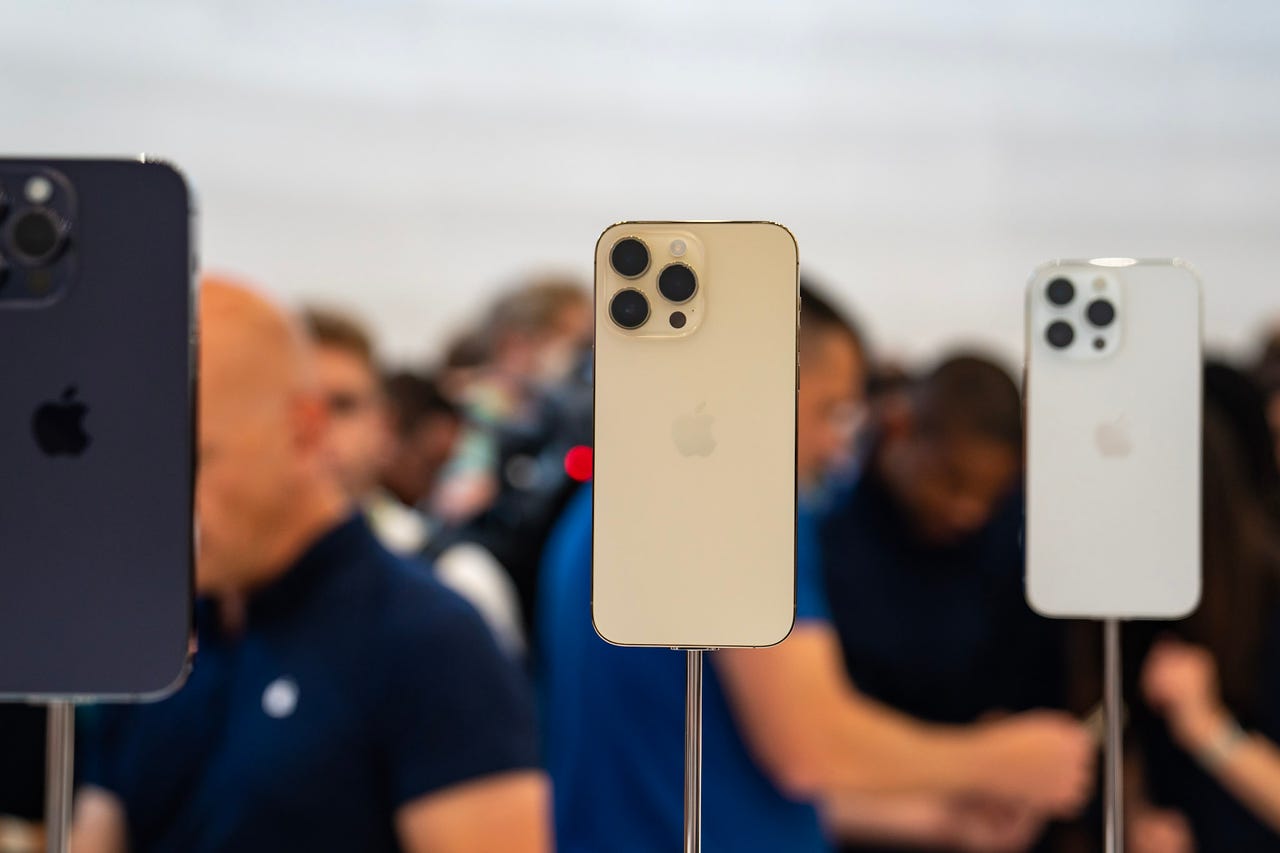iPhone 14 Pro Max: Here's how much it costs Apple to make yours

A new report details how much it costs in materials to make Apple's top-of-the line iPhone 14 Pro Max.
According to Counterpoint Research's bill of materials (BoM) analysis of the iPhone 14 Pro Max with 128GB, the cost is about $464. That model retails for $1,099. The analysis only captures the cost of components, not the cost of production, distribution, and so on.
Also: Best phone showdown: The top iPhone, Galaxy, and Pixel models stacked up
The two most expensive categories were display and processors, which include Apple's A16 bionic processor and its custom chips, followed by third-party 5G chips, and the camera. The main drivers of the cost increase were the application processor, display, and camera.
Smartphones
The BoM of the mmWave 5G variant of the iPhone 14 Pro Max costs about $474, while the BoM for the sub-6GHz model adds up to about $454. Counterpoint's Shenghao Bai assumes the mmWave variant's share of the product mix at the end of 2022 was about 44%. On that basis, he estimates the blended materials cost for the iPhone model was $464, marking a 3.7% increase in cost over the iPhone 13 Pro Max.
While there isn't much of a change in overall cost of materials, the analysis found the share of Apple's custom-designed component costs have risen to 22% in the iPhone 14 Pro Max. It was lower in the predecessor.
The M1 and M2 Apple silicon chips for Macs are the most successful recent examples of Apple designing its own components in place of other vendors' kit.
On iPhone specifically, Apple's self-designed chip components include the A16 bionic processor, as well as PMIC, audio, connectivity, and touch control. The A16 bionic featured one billion more transistors than the A15's 15 billion. The A16 cost $11, or a 6.7% increase, due to the new 4nm process Apple used.
Bai found that costs in the collection of chips in the cellular category fell to 13% in the iPhone 14 Pro Max versus 14% in the predecessor. This was down to a fall in component prices as 5G cellular technology rose in popularity. The main iPhone 14 Pro Max cellular suppliers included Qualcomm, Qorvo, Skyworks, Broadcom.
Also: The best green phones: Sustainable and eco-friendly smartphones
The iPhone Pro Max display also gained an always-on feature like the Apple Watch. Apple also increased the peak brightness in HDR mode and outdoor mode. Samsung supplied the model's display panels.
